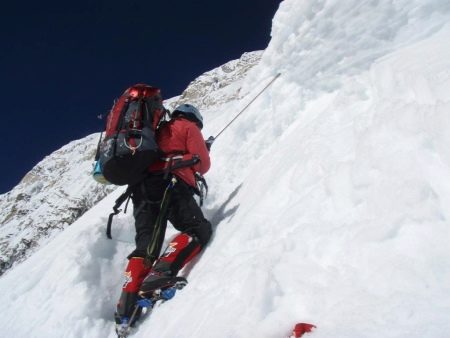Mountain boots
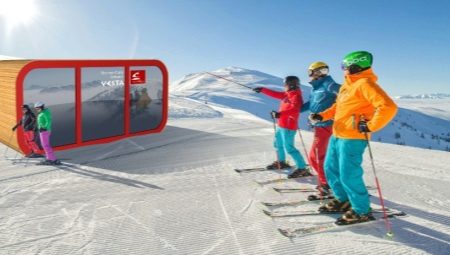
The climber's outfit should include the right footwear, designed specifically for the long haul in the mountainous terrain. For this purpose, specialized mountain boots have been created that can withstand significant loads, ensure safety, retain heat and protect from moisture.
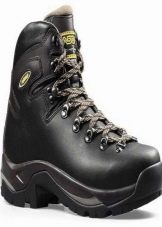
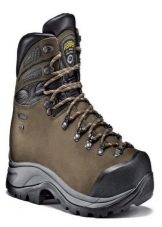
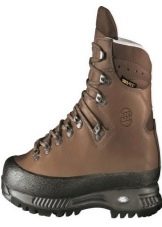
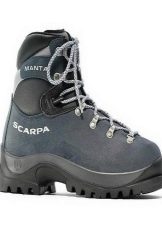
Types and models
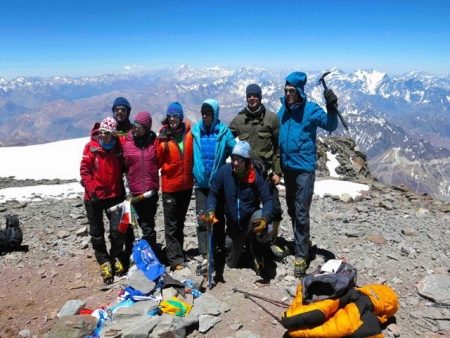
Mountain boots have certain varieties, they are determined by the complexity of the hike, primarily the height to which the traveler plans to climb and, accordingly, the air temperature.
- Walking (or tourist). Such models are designed for lifting to low heights. The main task of such shoes is ventilation. Quality boots are equipped with a special Vibram sole. Such products are quite appropriate to use as casual shoes, provided that they fit into your style of clothing.
- Heavy Trekking Shoes (travel of medium difficulty). These boots occupy an intermediate position between the models for hobbyists and professional climbers. They are equipped with a heel edge for added stability, the already mentioned outsole Vibram, membrane Gore-Tex, excluding the ingress of moisture into the shoe.
- Models for technical mountaineering (designed for difficult ascents). These models are very durable, always have lugs and rigid outsole. If necessary, you can choose more insulated shoes for the winter.
- High altitude mountaineering boots (produced specifically for ascents to heights over 5 kilometers). Their characteristic feature is two-layering: the upper layer protects from snow, and the lower one retains body heat. These boots also have paddle welts, outsole Vibram.
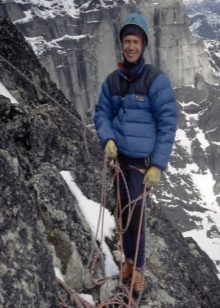
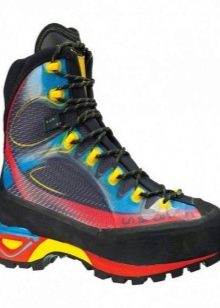

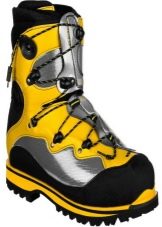



Equipment
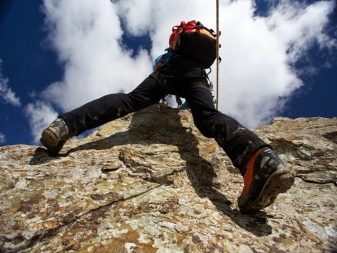
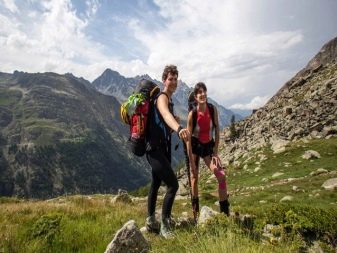
Specialized mountain boots have special technological details:
- Membrane stitching, which is designed to prevent moisture from penetrating into the shoe. At the same time, steam from sweat is freely removed during active walking.
- Dedicated outsole that provides the best traction on icy, rocky or wet surfaces. A nylon / polyurethane foam midsole helps increase shock absorption when jumping. In addition, the special heel tuber (anti-shock) also softens shock loads.
- When attaching crampons, the rigidity is increased by built-in metal plates up to 2 mm thick.
- The insoles that come with mountain boots, if necessary, can be changed to more functional ones - fabric ones with a rubber bottom. Rubber keeps the insole immobile, and textiles last much longer than paper counterparts.
- Fittings are blocks that facilitate uniform tightening of the laces, making it lighter, stoppers between the top and bottom of the laces.
- Bottom protection. Boots with it acquire a not very aesthetic appearance, but, nevertheless, it is extremely useful (it increases the service life of the boots and their waterproof properties).
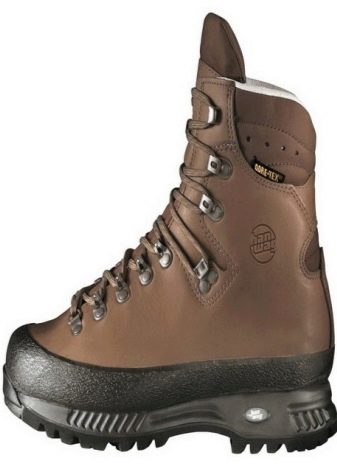
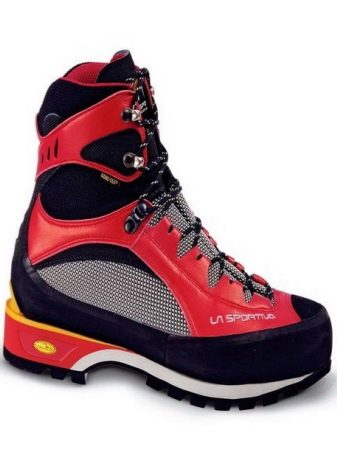
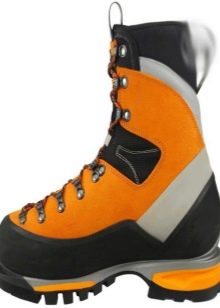
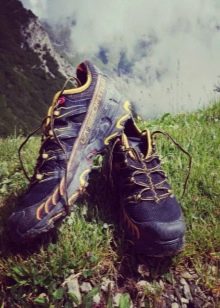
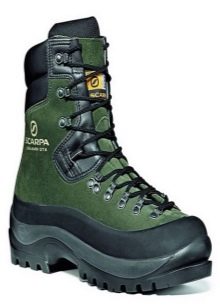
Materials (edit)
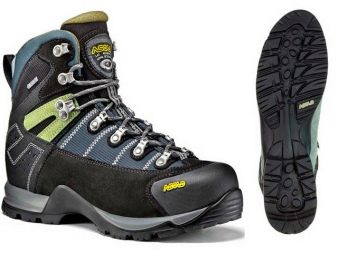
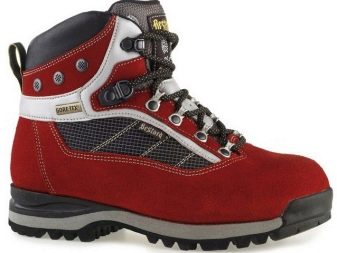
The most popular material for mountain boots is genuine leather. It is given special properties - increased strength, water resistance, and also a "breathable" structure. The advantage of this material is also that over time it takes on the anatomical shape of the foot.
Another wear-resistant material - nubuck... However, it is softer and thinner than leather. Suede is usually used for hiking and trekking boots.
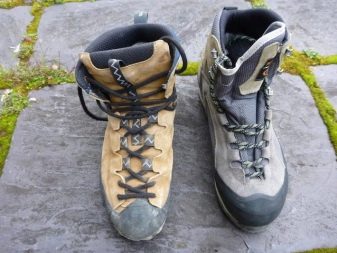
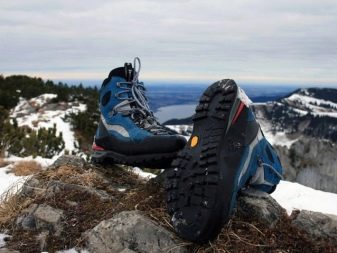
Synthetic textiles are also used to make hiking shoes. It provides a lighter weight of products, stylish design, and also often combines incompatible properties at first glance. This, for example, Fly-Tec - elastic material with excellent ventilation properties, treated with a water-repellent compound on both sides. Schoeller Keprotec - also water-resistant, lightweight but extremely durable fabric. Schoeller dynamic - textiles that combine polyamide and lycra.
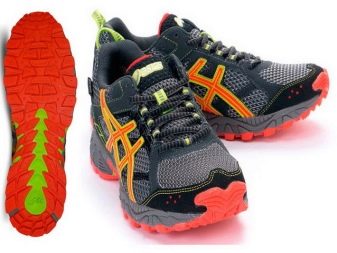
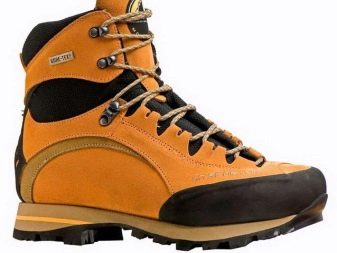
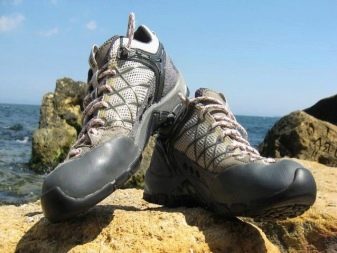

The ideal combination of materials for mountain boots is a combination of natural and synthetic raw materials, which complement each other, compensating for the disadvantages.
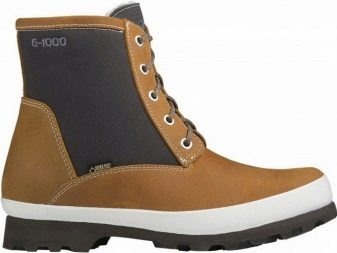
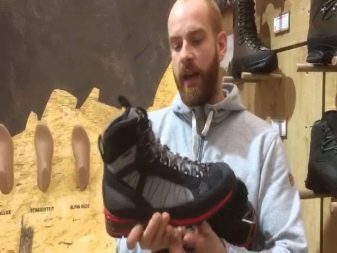
Brands


There are a number of leading hiking shoe companies. They introduce the latest technological developments into production, in addition, they always provide an extended warranty for their products.
German brand Lowa, leading its history since the distant 1923, is popular all over the world, the shoes were tested in the most extreme conditions by travelers, participants of expeditions. The brand's mountain boots are distinguished by a unique last that seems to adjust to the foot without deforming the foot. For the first time in the world, the company began to produce a vulcanized sole.


Brand shoes Asolo embodies the results of innovative technologies that are constantly being improved. The firm owns the system development ASOFLEX, later - AFS. Mountain boots Asolodesigned for professional climbers, durable and lightweight, available in a wide range of models.
Company Meindl also produces quality footwear that fully meets the needs of the modern market. For example, the insulated model of mountain boots became famous. Cumbre, a Alien 1.0 received the title of the best shoe of 2011. The innovative development of the brand is self-forming shoes: under the influence of the heat of the human body, the shoes take the shape of the foot, filling all the voids.
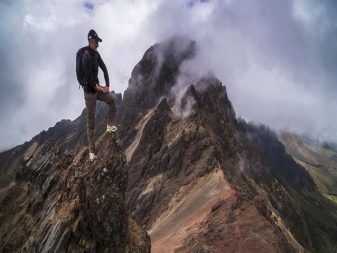

Bundeswehr mountain boots for (created specifically for the German armed forces) are manufactured by the company Haix... These shoes are made of the highest quality calfskin leather with vulcanized rubber soles. The tread does not leave marks on surfaces, even with very strong impacts. Thanks to membrane technology GORETEX feet always remain dry. The fast lacing system saves time when in a rush. The injury hazard of boots is almost reduced to zero - even when performing risky maneuvers, the leg will not turn up. It is easy to walk on toes and squat in these shoes.
BOREAL Is a well-known brand that produces sports shoes designed for professional climbers and tourists. All products BOREAL made of high quality raw materials, have a minimum number of seams. Years of research have led to the creation of many patented developments.

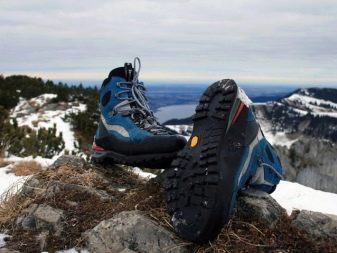
How to choose


First of all, you should decide on the complexity of your trip, and depending on it, choose sports shoes (and design, colors, material are already secondary). After all, you simply cannot climb ice and rocky surfaces in light trekking products. Likewise, heavy, brutal boots are not suitable for amateur tourists.

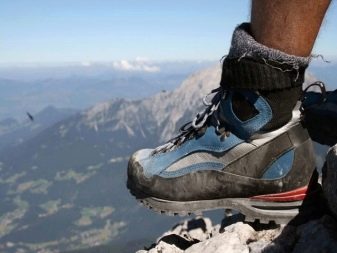
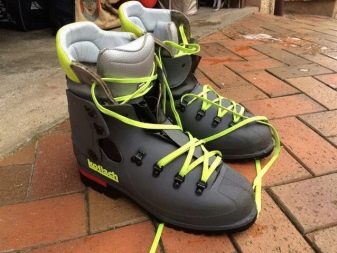
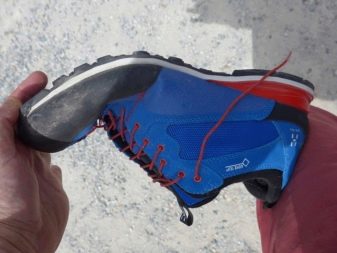
The most important element of mountain boots is the outsole. From trusted manufacturers, this Vibram, which is already a guarantee of quality, because they will not put expensive soles on dubious shoes.
Also pay attention to the insole, because the comfort of the boots largely depends on it. Ideally, it should have anti-fungal and anti-allergic treatment.
Evaluate the lacing: it provides the foot with stability, protects the muscles from overwork and injury.

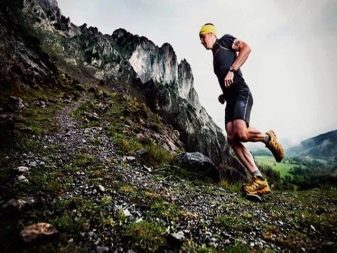
Note also that it is not recommended to buy mountain boots through the online store, since these shoes require careful fitting. The products should sit on the leg optimally comfortably, otherwise later you will not avoid the appearance of corns and blisters. The size of the shoes should be slightly larger than yours (let there be a gap between the heel and the back of about a toe thick), because when descending, your toes will inevitably rest against the toe of the shoe and pain can occur in tight boots.
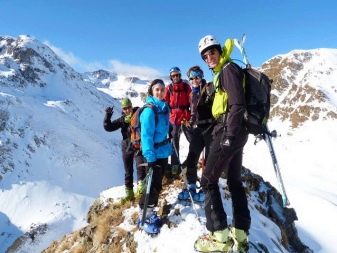

Be sure to measure these shoes toe-to-toe. There are special socks for mountain travel. Made of synthetic material (cotton is not suitable because it absorbs moisture, increasing the risk of calluses), they have thickenings in the necessary places.
Shoes from different companies have different heights and widths. When trying on, make sure that the heel rests on the heel, but does not come off the sole. Boots should fit snugly around the leg, but not squeeze it in some places.

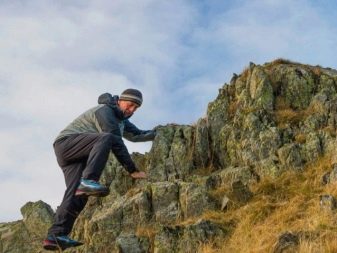
How to care?
It is especially important to keep expensive mountain boots in good working order. There are simple rules for caring for them, the main thing is to follow them regularly.
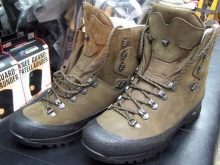
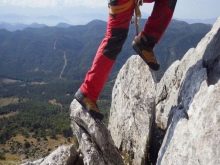

- Do not dry these shoes over an open fire (for example, over a fire), as well as under the scorching rays of the sun. Natural drying will be optimal at a temperature of about 20 degrees Celsius and 65% humidity (using a newspaper, a fan, on a peg). Remember to remove the insoles when doing this.
- Treat climbing shoes with a special product at least once a year, and immediately before hiking, use an impregnation to restore the waterproofness of the boots.
- If your model is walking, then after walking around the city, wipe your boots to get rid of anti-icing reagents.
- Membrane boots must be lubricated with specialized products for this type of footwear.

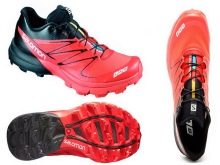
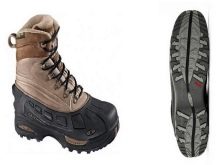
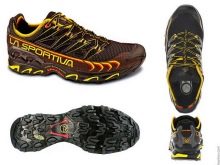

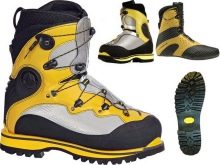
Images
Mountain boots have a high bootleg made of durable textile, which reliably protects from snow getting inside. The sole is equipped with special devices that help to climb the snowy mountain slope. In addition, the shoes have a stylish design - contrasting colors are harmoniously combined with a jacket, helmet and backpack.
